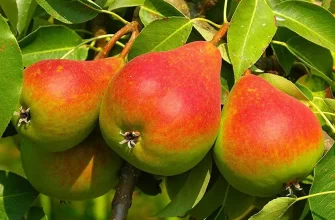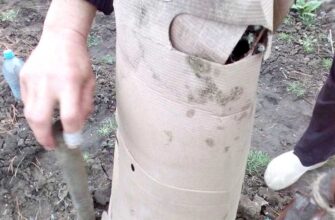- Важность обрезки-формировки ремонтантной малины
- Основные принципы обрезки-формировки
- Подготовка к обрезке-формировке
- Лучшее время для обрезки-формировки ремонтантной малины
- Правильная техника обрезки-формировки
- 1. Первая обрезка
- 2. Вторая обрезка
- Как сделать двойной урожай с помощью обрезки-формировки
- Правило 1: обрезайте малину два раза в год
- Правило 2: соблюдайте правила обрезки
- Правило 3: обрезанную малину удобряйте
- Погрешности при обрезке-формировке ремонтантной малины
- Важность санитарной обрезки-формировки
- Профилактика заболеваний через обрезку-формировку
- Особенности обрезки-формировки в разных регионах
- Учитывайте климатические условия
- Соблюдайте правила обрезки-формировки
- Оптимальные инструменты для обрезки-формировки ремонтантной малины для двойного урожая!
- Последствия неправильной обрезки-формировки
- Вопрос-ответ:
- Как обрезать и формировать ремонтантную малину для получения двойного урожая?
- Когда и как лучше обрезать ремонтантную малину для получения двойного урожая?
- Какие побеги следует оставить при обрезке ремонтантной малины для получения двойного урожая?
- Какие еще методы помимо обрезки можно использовать для получения двойного урожая ремонтантной малины?
- Видео:
- Обрезка ремонтантной малины на двойной урожай!
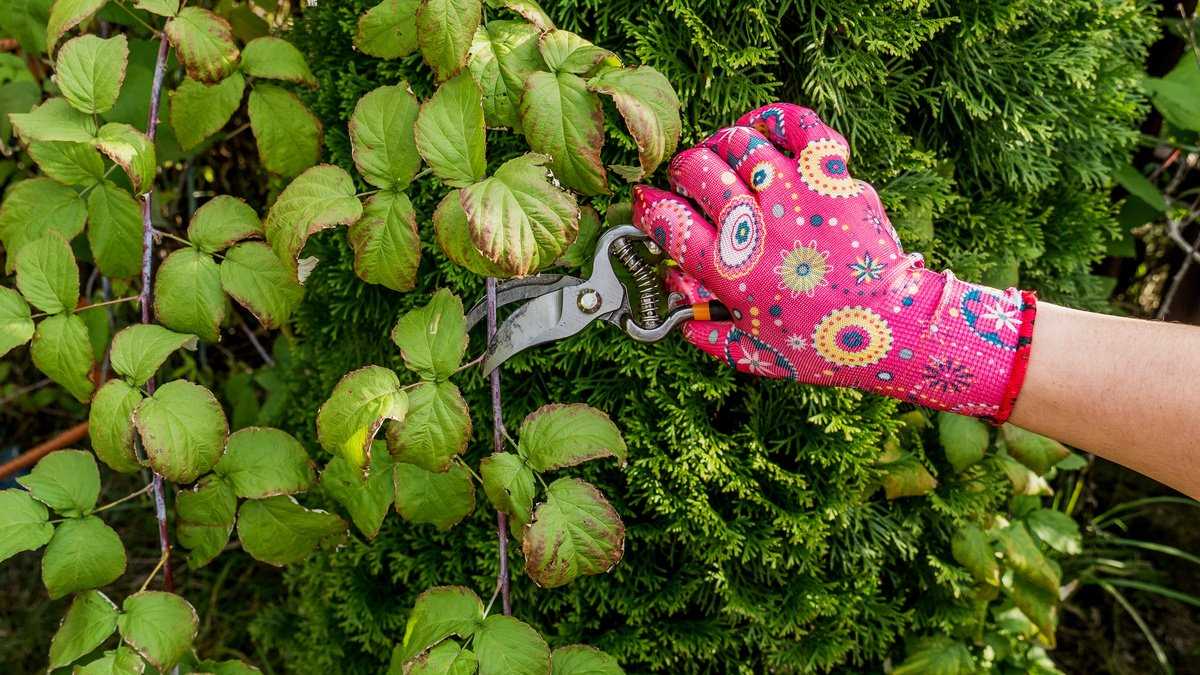
В выращивании малины соблюдение правил обрезки-формировки играет важную роль. Особенно это актуально для ремонтантных сортов, которые способны давать два урожая за сезон. Обрезка-формировка позволяет не только сохранить здоровье растений, но и увеличить их плодоношение.
Первое правило обрезки-формировки ремонтантной малины – устранение старых и поврежденных побегов. Они часто не дают хороший урожай и могут стать источником инфекций и болезней. Поэтому старые побеги следует удалить, чтобы оставить место для новых, здоровых и сильных.
Второе правило – формирование куста малины. Мощные и здоровые побеги следует оставить, а слабые и лишние – удалить. Оставленные побеги рекомендуется приподнять с помощью опоры или фиксатора, чтобы они не касались земли и не подвергались гниению. Также стоит обратить внимание на расстояние между побегами – оно должно быть достаточным для нормального роста и развития растений.
Важность обрезки-формировки ремонтантной малины

Ремонтантная малина отличается от обычной тем, что способна давать урожай два раза в сезон. Однако, чтобы получать хороший урожай и сохранять здоровье растений, необходимо правильно обрезать и формировать малину.
Правила обрезки-формировки ремонтантной малины просты и доступны даже для начинающих садоводов. Важно соблюдать их, чтобы растение могло полноценно развиваться и давать два урожая. Первая обрезка проводится весной, до начала активного роста. В этот период удаляются старые и поврежденные побеги, а оставшиеся сокращаются на 1/3 длины.
Вторая обрезка проводится после первого урожая. В это время удаляются все побеги, на которых плоды уже созрели. Оставшиеся побеги сокращаются на 1/3 длины или оставляются без обрезки, если они еще не дали урожая. Таким образом, растение будет иметь возможность дать второй урожай.
Следуя правилам обрезки-формировки ремонтантной малины, вы сможете получать хороший урожай два раза в год. Не забывайте также о регулярных подкормках и поливе, чтобы обеспечить растению необходимые питательные вещества и влагу.
Основные принципы обрезки-формировки
Обрезка-формировка является важным процессом, который позволяет получать двойной урожай малины. Для достижения успеха, необходимо соблюдать определенные правила при обрезке-формировке ремонтантной малины.
1. Правильное время обрезки: Важно проводить обрезку-формировку в определенное время, чтобы получить наилучший урожай. Рекомендуется обрезать малину два раза в год — весной после зимы и осенью после плодоношения. Это позволит растению восстановиться и подготовиться к новому сезону.
2. Удаление старых побегов: Важно удалять старые побеги, которые уже плодоносили, чтобы освободить место для новых побегов. Это позволит растению максимально использовать свои ресурсы для формирования урожая.
3. Формирование куста: При обрезке-формировке необходимо создавать компактный и удобный куст малины. Для этого рекомендуется сокращать боковые побеги на 1/3 и удалять верхушку основного побега. Это способствует равномерному развитию растения и повышает его плодоносность.
4. Соблюдайте гигиену: После каждой обрезки-формировки необходимо обязательно убирать и уничтожать отрезанные ветки и листья. Это поможет предотвратить распространение болезней и вредителей.
Соблюдение этих основных принципов обрезки-формировки ремонтантной малины позволит получить обильный двойной урожай и поддерживать здоровье растения на протяжении всего сезона.
Подготовка к обрезке-формировке
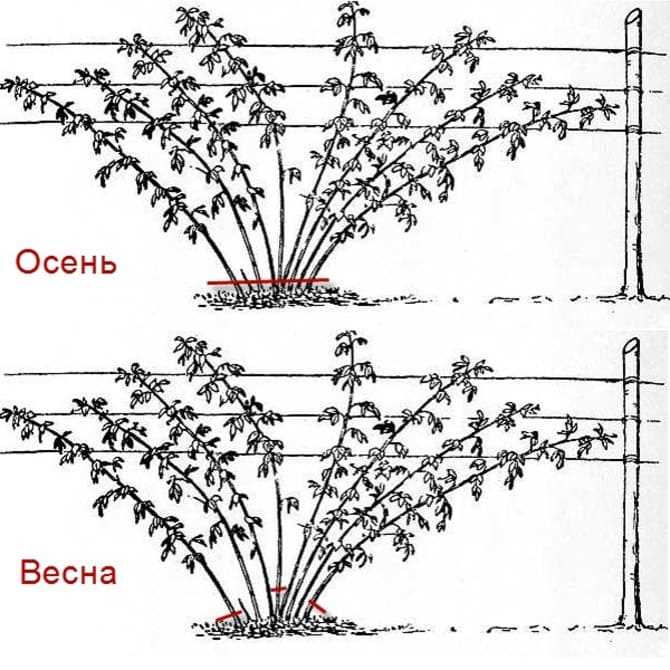
Для успешной обрезки-формировки ремонтантной малины и получения двойного урожая, необходимо соблюдать определенные правила.
Выбор подходящего срока: Прежде чем приступить к обрезке-формировке малины, нужно определиться со временем ее проведения. Лучший момент для этого — начало весны, когда растение еще не начало активное рост, но уже прошло холодное время.
Подготовка инструментов: Перед началом обрезки-формировки малины, необходимо проверить состояние инструментов. Острые и чистые инструменты позволят провести операцию с минимальным вредом для растения.
Правильный подход: При обрезке-формировке малины, важно соблюдать правила и методы, чтобы достичь желаемого результата. Нужно обрезать все побеги, оставив только несколько самых сильных и здоровых.
Уход после обрезки: После обрезки-формировки малины, необходимо обеспечить растению хорошие условия для восстановления. Регулярный полив, подкормка и удаление сорняков помогут растению быстро восстановиться и дать хороший урожай.
Лучшее время для обрезки-формировки ремонтантной малины
Ремонтантная малина имеет особую способность цвести и плодоносить два раза за сезон. Для достижения максимального урожая необходимо соблюдать правила обрезки-формировки растения. Одним из ключевых моментов является выбор оптимального времени для проведения этой процедуры.
Наилучшее время для обрезки-формировки ремонтантной малины — конец зимы или ранняя весна, когда растение еще находится в состоянии покоя. В этот период соки не активно движутся, и малина не подвержена стрессу от обрезки.
Следует помнить, что обрезка-формировка ремонтантной малины проводится дважды за сезон. Первая обрезка производится в конце зимы или в начале весны, до начала активного роста растения. Она направлена на удаление старых и поврежденных побегов, а также на формирование куста для обеспечения лучшей доступности света и воздуха.
Вторая обрезка-формировка ремонтантной малины выполняется после первого цикла плодоношения, в конце лета или начале осени. В этот раз акцент делается на удаление побегов, на которых произошло плодоношение, а также на формирование новых побегов для следующего сезона урожая. Соблюдение правил обрезки-формировки ремонтантной малины позволит получить более крупные и качественные ягоды, а также обеспечить здоровый рост растения на протяжении всего сезона.
Правильная техника обрезки-формировки
Правила обрезки-формировки ремонтантной малины очень важны для получения двух урожаев в год. Соблюдайте определенную последовательность действий и достигнете успеха.
1. Первая обрезка
Первая обрезка малины производится весной после оттаивания снега и перед началом активного роста растения. Удалите все поврежденные, слабые и замерзшие побеги. Оставьте 6-8 самых сильных побегов на каждый кустик.
2. Вторая обрезка

Вторая обрезка проводится осенью, после окончания плодоношения. Удалите все побеги, на которых произросли плоды, а также сухие и поврежденные побеги. Оставьте самые сильные и здоровые побеги, которые станут основой для следующего урожая.
Следуя этим простым правилам обрезки-формировки малины, вы сможете получать два урожая в год и обеспечить здоровый рост растения.
Как сделать двойной урожай с помощью обрезки-формировки
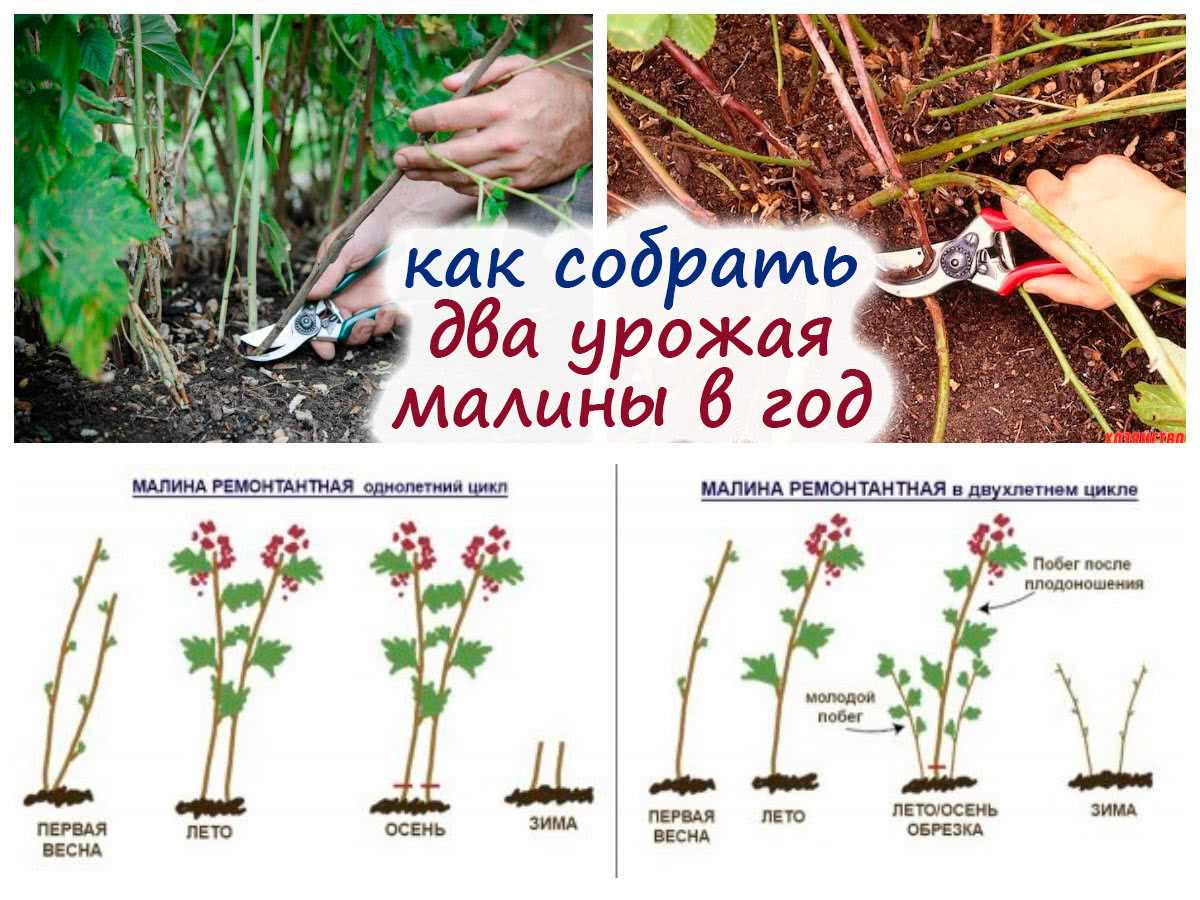
Обрезка-формировка малины является одним из ключевых моментов для получения двойного урожая. Соблюдая определенные правила, вы сможете получать два урожая в год.
Правило 1: обрезайте малину два раза в год
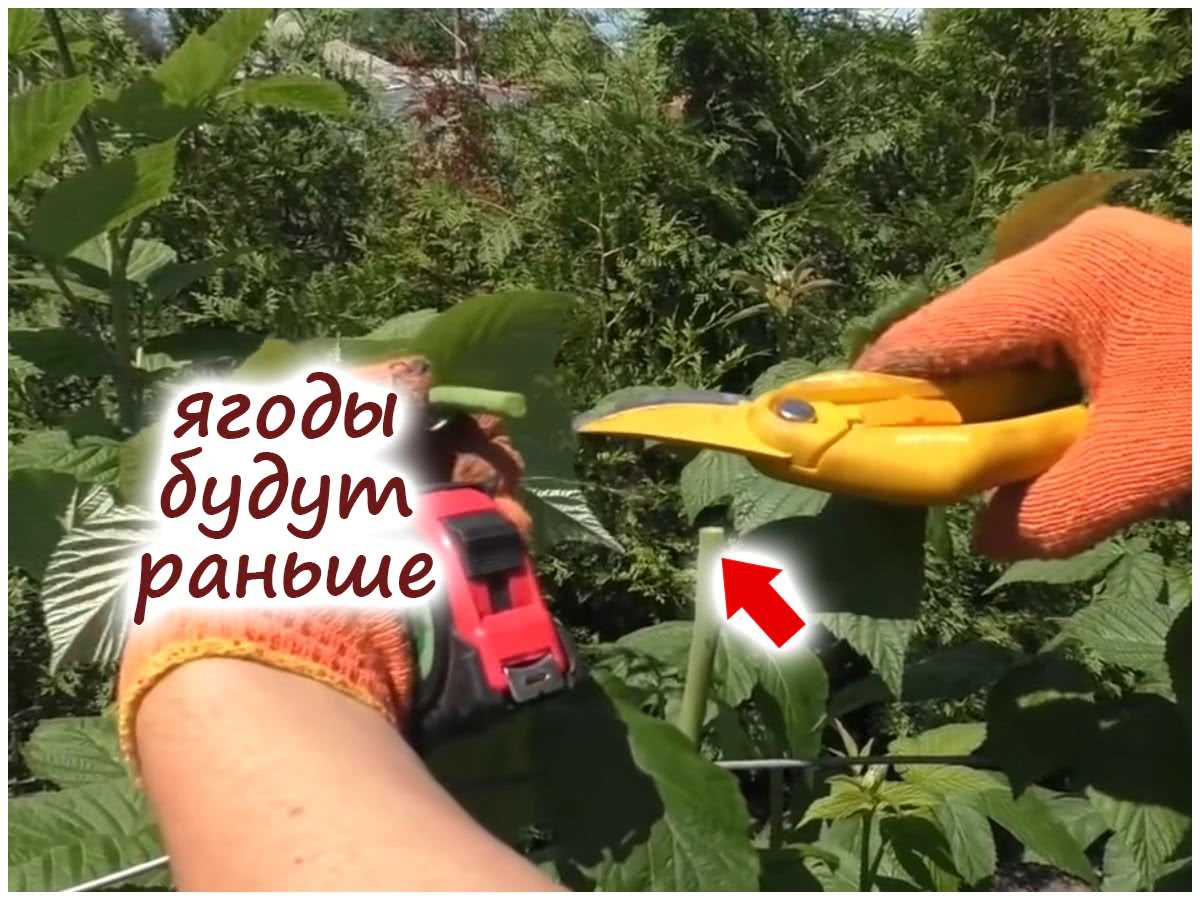
Для получения двойного урожая, необходимо обрезать малину дважды в год. Первая обрезка проводится весной после окончания зимы, а вторая — осенью, перед началом холодов. Это позволит поддерживать растение в хорошей форме и стимулировать развитие новых побегов.
Правило 2: соблюдайте правила обрезки

При обрезке-формировке малины необходимо соблюдать определенные правила. Удаляйте старые побеги, оставляя только самые здоровые и сильные. Также обрезайте верхушки побегов, чтобы стимулировать их ветвление. Это позволит малине разрастаться и формировать больше ягод.
Правило 3: обрезанную малину удобряйте

Так стоп!!! Вы всё ещё не подписаны на наши каналы в Телеграмм и Дзен? Посмотрите: ТГ - (@historyfantasydetectivechat) и Дзен (https://dzen.ru/myshortsstorys)
После обрезки-формировки малины не забывайте удобрять растение. Используйте органические удобрения, такие как компост или перегной. Это позволит малине получить все необходимые питательные вещества для активного роста и развития.
Соблюдая эти простые правила обрезки-формировки малины, вы сможете получать два урожая в год. Не забывайте также ухаживать за растением, поливая его регулярно и обеспечивая защиту от вредителей и болезней. В результате вы получите обильный и качественный урожай малины.
Погрешности при обрезке-формировке ремонтантной малины
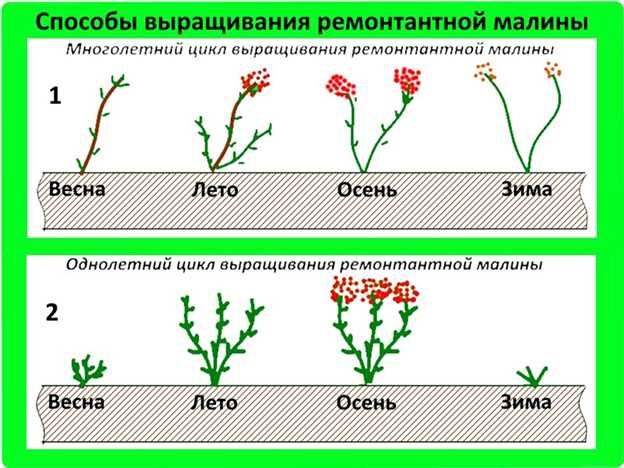
Обрезка-формировка ремонтантной малины является важным этапом для получения обильного урожая. Однако, при выполнении этого процесса могут возникнуть определенные погрешности, которые могут снизить количество и качество получаемой ягоды.
Во-первых, при обрезке-формировке ремонтантной малины необходимо соблюдать определенные правила и рекомендации. Если не следовать им, то можно причинить вред растению и уменьшить его урожайность. Например, неправильная обрезка может привести к неравномерному распределению плодовых побегов, что впоследствии может затруднить уход за растением и ухудшить качество получаемого урожая.
Во-вторых, необходимо помнить о том, что ремонтантная малина может давать два урожая в год. При этом каждый урожай может иметь свои особенности и требовать определенных методов обрезки-формировки. Неправильный подход к обрезке может привести к потере одного из урожаев или снижению его качества.
В-третьих, при обрезке-формировке ремонтантной малины следует учитывать, что некоторые сорта и виды малины могут иметь свои особенности и требовать индивидуального подхода. Например, у некоторых сортов малины рекомендуется оставлять больше плодовых побегов, чтобы получить больший урожай, в то время как у других сортов может быть противоположная рекомендация.
Таким образом, чтобы получать хороший урожай ремонтантной малины, необходимо соблюдать правила и рекомендации по обрезке-формировке, учитывать особенности каждого урожая и сорта малины, и быть внимательными к растению. Только при таком подходе можно достичь желаемых результатов и получить обильный урожай в два раза в год.
Важность санитарной обрезки-формировки
Соблюдайте правила санитарной обрезки-формировки малины, чтобы получать богатый урожай ремонтантной малины два раза в год. Санитарная обрезка-формировка является важным аспектом ухода за ремонтантной малиной, позволяющим создать оптимальные условия для роста и развития растения.
Санитарная обрезка-формировка позволяет удалить больные, поврежденные или сухие ветки, а также излишне густые или перекрывающие друг друга ветви. Это помогает предотвратить распространение болезней и вредителей, а также улучшает доступ света и воздуха к растению.
Правильно санитарно обрезанная-сформированная малина может получить достаточно питательных веществ и энергии для роста, цветения и плодоношения. Удаление лишних ветвей также позволяет улучшить вентиляцию и освещение растения, что способствует его здоровому развитию и повышению урожайности.
Следует помнить, что санитарная обрезка-формировка малины лучше всего проводится в период покоя, осенью или ранней весной, когда нет активного роста растения. Важно использовать острый садовый инструмент для обрезки и следить за гигиеной, чтобы не заражать растение. Следуя правилам санитарной обрезки-формировки, вы сможете получать красивые и здоровые растения малины, которые радуют богатым урожаем дважды в год.
Профилактика заболеваний через обрезку-формировку
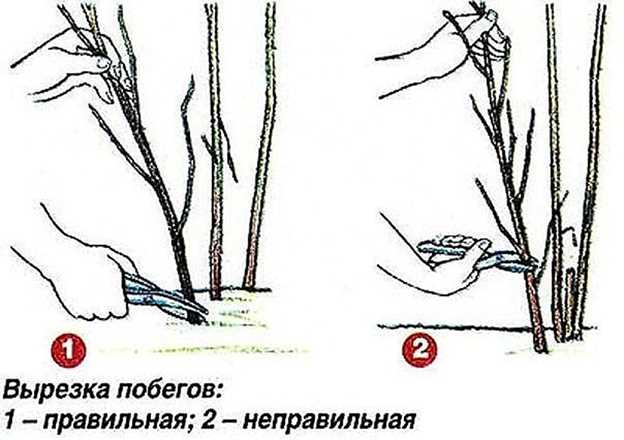
Одним из важных аспектов возделывания ремонтантной малины и получения двойного урожая является обрезка-формировка кустов. Правильное проведение данной процедуры способствует не только увеличению урожайности, но и помогает предотвратить возникновение различных заболеваний.
Регулярная обрезка-формировка малины позволяет поддерживать кусты в оптимальной физической форме, обеспечивая достаточную освещенность и циркуляцию воздуха. Это особенно важно для ремонтантных сортов, которые способны давать урожай несколько раз за сезон.
Важно помнить, что правила обрезки-формировки малины для двойного урожая отличаются от правил обрезки обычных сортов малины. При обрезке-формировке ремонтантной малины необходимо удалять не только старые побеги, но и побеги, которые уже дали урожай. Это позволит кусту сосредоточить свои силы на формировании новых плодоносных побегов и получить дополнительный урожай во второй раз.
Обрезка-формировка малины для двойного урожая также помогает предотвратить возникновение заболеваний и инфекций. Правильно сформированные кусты малины имеют лучшую вентиляцию, что снижает риск развития грибковых и бактериальных инфекций. Также, удаление старых побегов позволяет избежать скопления микроорганизмов, которые могут стать источником заболеваний.
Особенности обрезки-формировки в разных регионах

Обрезка-формировка ремонтантной малины для получения двойного урожая может иметь некоторые особенности в зависимости от региона, в котором вы выращиваете растение. Следуя правилам обрезки-формировки, вы сможете получить более высокий урожай и улучшить качество ягод.
Учитывайте климатические условия
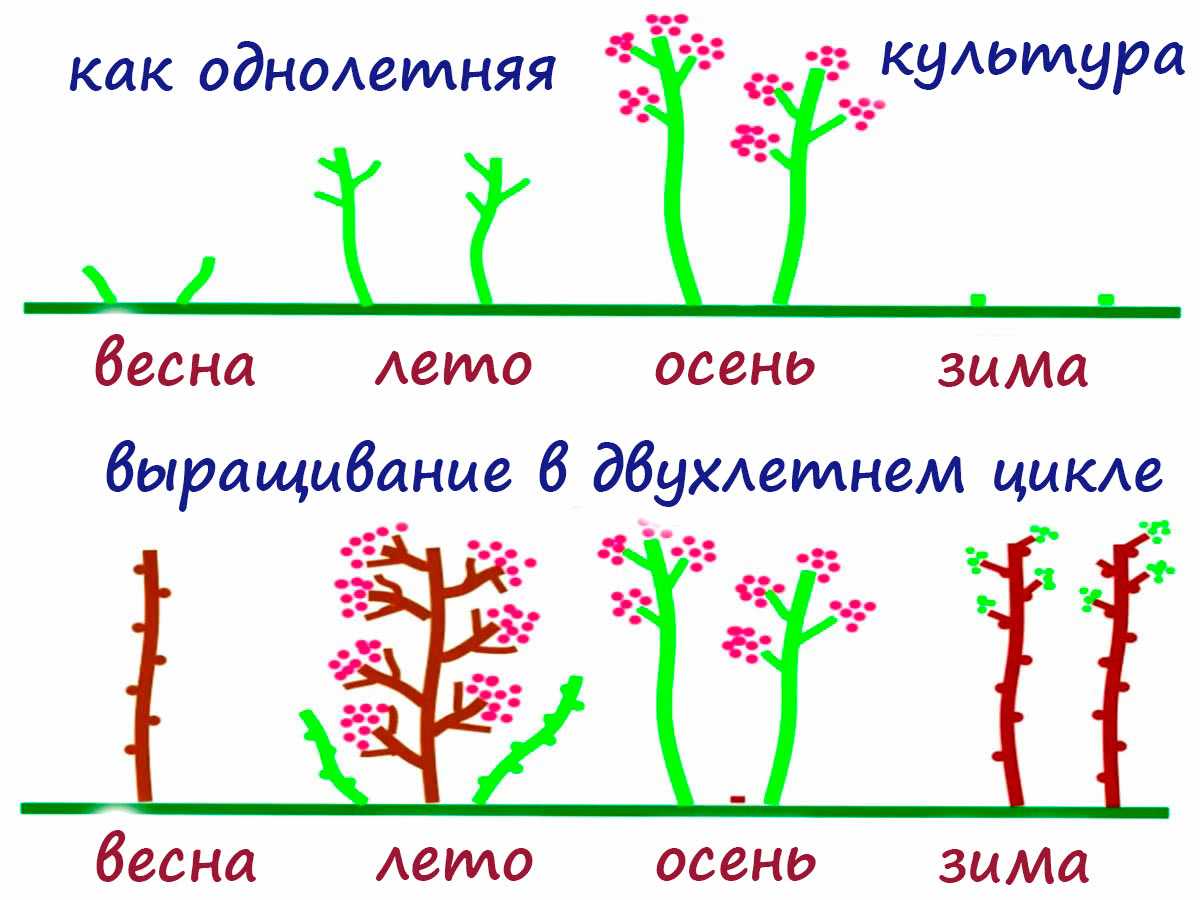
Один из ключевых факторов при обрезке-формировке малины – это климатические условия вашего региона. В холодных регионах, где зимы холодные и снежные, важно обрезать растения таким образом, чтобы они были максимально укрыты от морозов. Это поможет сохранить побеги и обеспечить их рост и развитие весной. В более теплых регионах, где зимы мягкие и без снега, можно проводить более активную обрезку, чтобы стимулировать рост новых побегов и получить два урожая в сезон.
Соблюдайте правила обрезки-формировки

Правильное выполнение обрезки-формировки малины крайне важно для получения хорошего урожая. Независимо от региона, важно соблюдать основные правила обрезки: удалять слабые и поврежденные побеги, оставлять 5-7 сильных побегов на куст, сокращать их до 20-30 сантиметров и т.д. Это поможет растению развиваться правильно и обеспечит его здоровый рост и плодоношение.
В разных регионах могут быть некоторые отличия в правилах обрезки-формировки. Некоторые садоводы предпочитают сильно обрезать малину, чтобы получить более крупные ягоды и увеличить урожай, в то время как другие предпочитают более щадящую обрезку, чтобы сохранить силу растения и предотвратить его истощение.
Оптимальные инструменты для обрезки-формировки ремонтантной малины для двойного урожая!
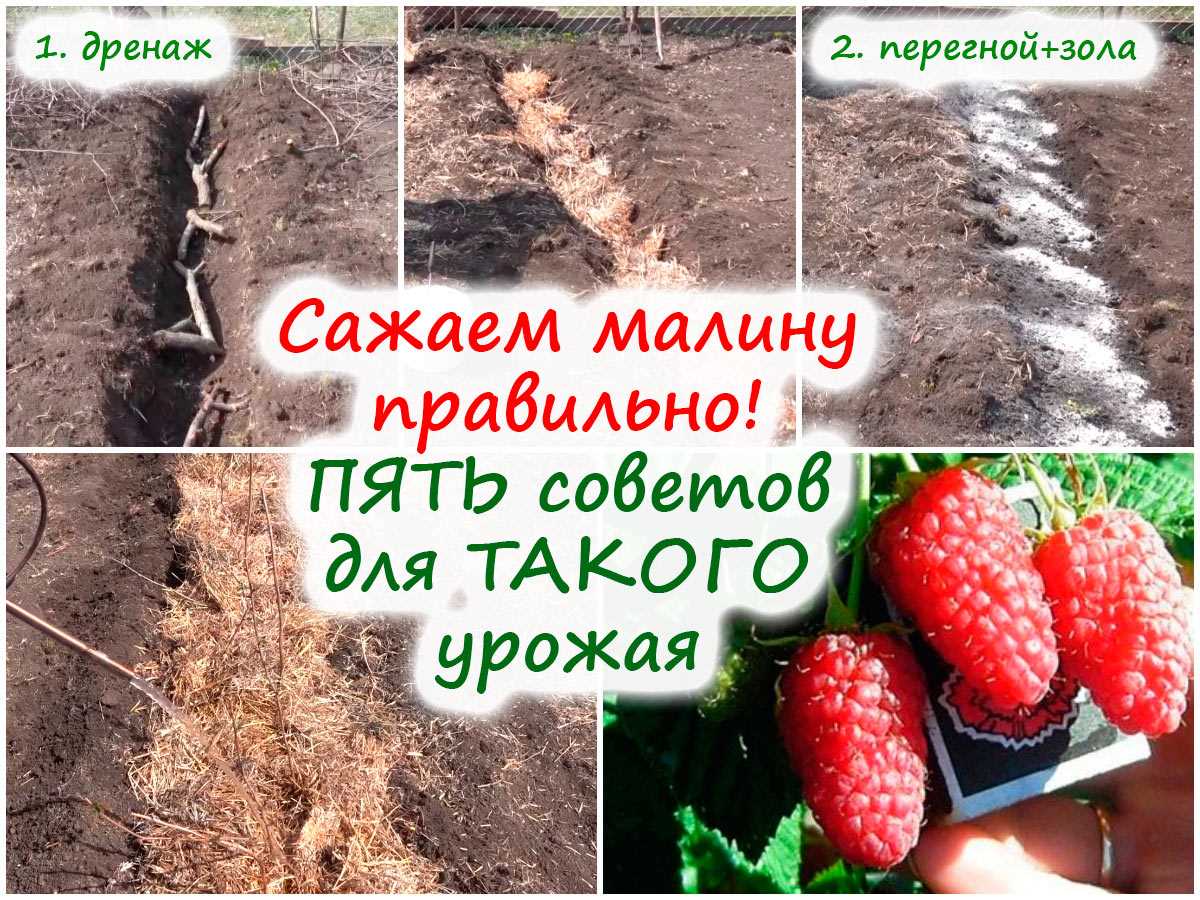
Правильный выбор инструментов для обрезки-формировки малины является ключевым моментом для достижения двойного урожая. Соблюдайте следующие правила:
- При покупке секатора обратите внимание на его качество и остроту лезвий. Острое лезвие позволит делать точные и аккуратные срезы, которые не повредят растение.
- Для удаления сухих и поврежденных веток лучше использовать пилку с тонким лезвием. Она позволит сделать ровные и гладкие срезы, минимизируя возможность заражения растения различными инфекциями.
- Для формирования куста малины рекомендуется использовать триммер или газонокосилку с лезвием, которые позволят быстро и эффективно обрезать большие участки зеленой массы.
Выбирая оптимальные инструменты для обрезки-формировки ремонтантной малины, вы сможете достичь двойного урожая и получить здоровые и крепкие растения. Следуйте указанным правилам и не забывайте о регулярной обрезке, чтобы ваша малина радовала вас богатым и сочным урожаем каждый раз!
Последствия неправильной обрезки-формировки
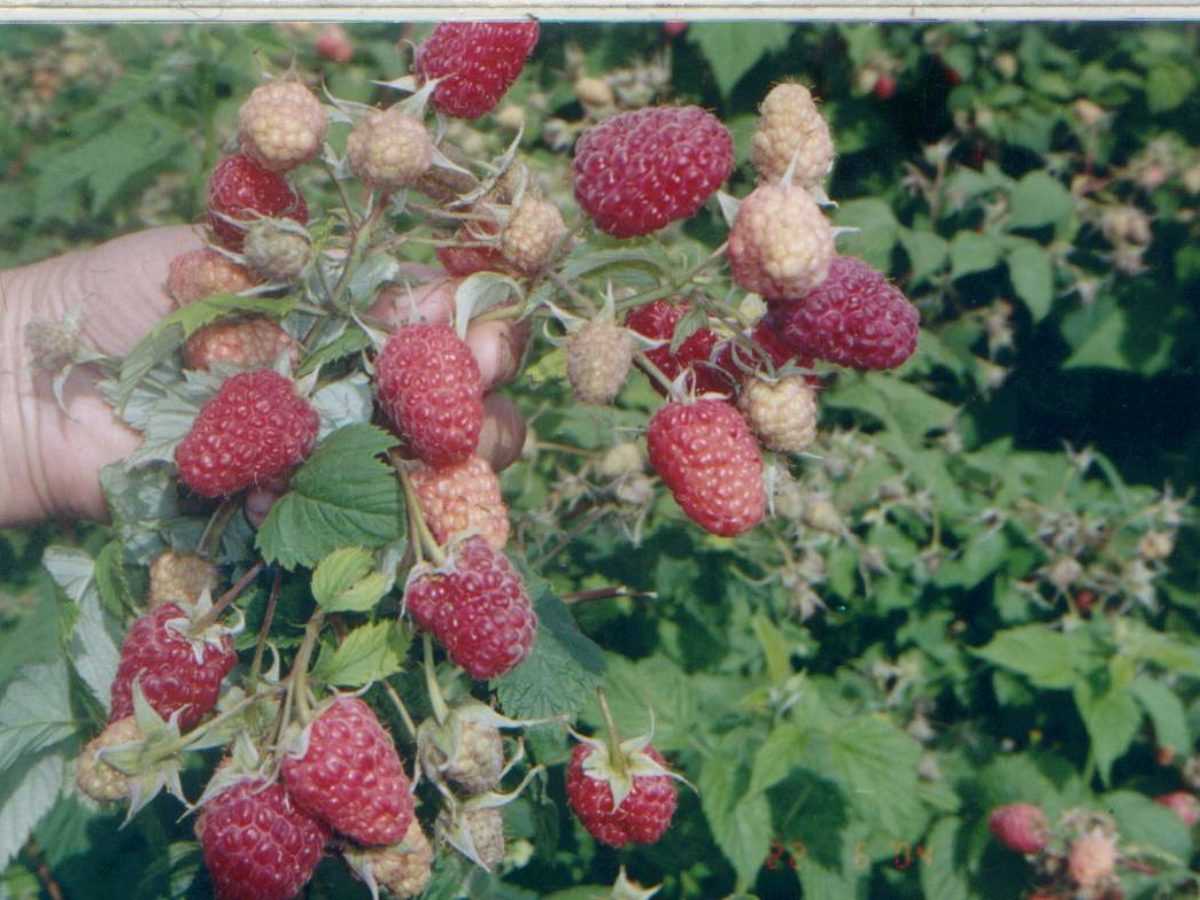
Соблюдайте правила обрезки-формировки ремонтантной малины, чтобы не столкнуться с негативными последствиями и получить два обильных урожая в год.
Неправильная обрезка-формировка ремонтантной малины может привести к снижению урожайности. Если срезать все побеги, то растение не сможет развиваться и давать плоды. С другой стороны, если не обрезать растение вовремя, то оно будет перерастать и не сможет нормально формироваться. В результате урожай будет меньше и качество ягод ухудшится.
Один из основных недостатков неправильной обрезки-формировки — неравномерное созревание ягод. При неправильной обрезке растение может перегружаться плодами только на некоторых ветвях, что приведет к неравномерному созреванию ягод. Это означает, что на некоторых ветвях ягоды будут созревать раньше, а на других — позже. Таким образом, вы не сможете получить два полноценных урожая в год, а отдельные ягоды могут быть недозрелыми или перезрелыми.
Для получения двух урожаев ремонтантной малины в год очень важно правильно провести обрезку-формировку растения. Обрежьте побеги согласно рекомендациям и обязательно следите за состоянием растения в течение сезона. Правильная обрезка-формировка позволит растению нормально развиваться и давать обильные урожаи два раза в год.
Вопрос-ответ:
Как обрезать и формировать ремонтантную малину для получения двойного урожая?
Для обрезки и формирования ремонтантной малины для двойного урожая следует следующие рекомендации: 1. Весной удаляйте все сухие и поврежденные побеги. 2. Оставьте 4-5 самых сильных побегов на каждый метр грядки. 3. Периодически удаляйте боковые побеги для формирования порядка и лучшей циркуляции воздуха. 4. После первого урожая обрежьте побеги до уровня земли, оставив только 4-5 самых сильных побегов. Таким образом, вы сможете получить двойной урожай ремонтантной малины.
Когда и как лучше обрезать ремонтантную малину для получения двойного урожая?
Лучше всего обрезать ремонтантную малину весной, перед началом активного роста растений. В это время следует удалить все сухие и поврежденные побеги. Для формирования двойного урожая рекомендуется оставить 4-5 самых сильных побегов на каждый метр грядки. В течение сезона также следует периодически удалять боковые побеги для поддержания порядка и лучшей циркуляции воздуха. После первого урожая рекомендуется обрезать побеги до уровня земли, оставив только 4-5 самых сильных побегов. Таким образом, можно получить двойной урожай ремонтантной малины.
Какие побеги следует оставить при обрезке ремонтантной малины для получения двойного урожая?
При обрезке ремонтантной малины для получения двойного урожая следует оставить только самые сильные побеги. Рекомендуется оставить 4-5 самых сильных побегов на каждый метр грядки. Такие побеги имеют лучший потенциал для развития и плодоношения, что способствует получению двойного урожая.
Какие еще методы помимо обрезки можно использовать для получения двойного урожая ремонтантной малины?
Помимо обрезки, можно использовать следующие методы для получения двойного урожая ремонтантной малины: 1. Регулярное подкормливание растений органическими и минеральными удобрениями. 2. Полив растений в периоды засухи. 3. Мульчирование грядки слоем соломы или другого органического материала. 4. Защита растений от вредителей и болезней. Сочетание этих методов позволит повысить урожайность ремонтантной малины и получить двойной урожай.


